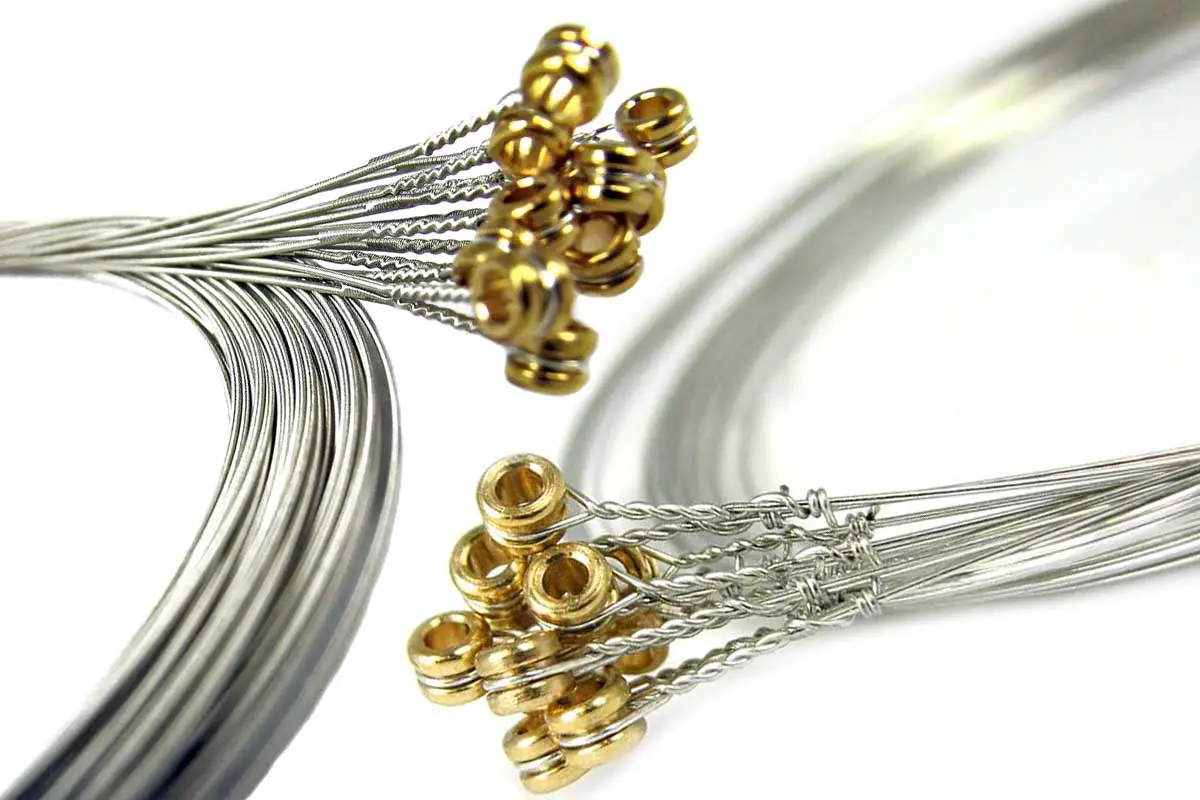As you explore the nuanced world of guitar strings, the decision between a wound G string and a plain third string is more than just a matter of preference—it’s about the tone, feel, and tension that suit your musical expression. If you’re delving into jazz or classical styles, you might find the wound G string’s warmer, more resonant tone to be a perfect match, as it offers a smoother transition between the bass and treble strings, with a heftier tension that can enhance your playing dynamics.
On the flip side, if you revel in the realm of rock, blues, or country, where string bending and vibrato are essential, the plain third string’s tension and brighter, more immediate tone could be the key to unlocking your sound. It provides a slinkier feel under your fingers, making it easier to execute those expressive bends and nuanced phrasings.
Choosing between these two string types will not only affect the sonic palette you paint with but also how your guitar responds to every touch, from a gentle caress to an aggressive bend. So consider the genres you’re most drawn to and the playing style you embody, as these will guide you towards the string that will bring harmony between your technique and your tonal aspirations.

Fundamentals of Guitar Strings
As a guitarist, it’s essential to understand the different types of strings available for your instrument and how they affect playability and tone. This knowledge can help you make informed decisions about the strings you use.
Understanding String Gauges
Guitar strings vary in thickness or gauge, which is measured in thousandths of an inch. The gauge of your strings can affect your guitar’s sound and playability. Lighter gauge strings are generally easier to play and produce a brighter tone, while heavier gauges provide more volume and sustain. Common manufacturers like Ernie Ball, Fender, Martin, and D’Addario offer a wide range of gauges to suit different styles.
Differences between Wound and Plain Strings
Your guitar’s lower strings, E, A, and D, are typically wound with metal around a core to produce their deep tones, whereas the higher strings, B and high E, are plain, meaning they do not have this wrapping. A wound G string may be used for a fuller, warmer sound compared to a plain G string, which is brighter and has a quicker response. Each type has its own set of advantages for different playing styles and music genres.
Related: What Are The Tuning Notes For Each Guitar String (and how to memorize them)
Role of the G String in Guitar Playability
The G string, whether wound or plain, is pivotal to your guitar’s overall feel and sound. A wound G may require a bit more finger strength to fret and bend due to its thicker profile, while a plain G is generally more malleable, facilitating easier string bending and vibrato. Additionally, the tonal contrast between a wound and a plain G could influence your choice depending on the music you play.
Characteristics of Wound 3rd Strings (Wound G Strings)
When considering wound G strings for your guitar, you’re looking at a blend of materials and construction that yield distinctive qualities in sound and performance.
Tone and Sustain
Your wound G string, encased with a wrap wire, typically delivers a warmer tone compared to its plain counterpart. The wrapped construction contributes to a richer harmonic content and a longer sustain. This is because the mass of the wound string allows it to vibrate longer, offering you sustained notes that can enhance your playing experience.
Tuning Stability and Intonation
In terms of tuning stability, wound G strings tend to hold their tuning better after they have properly settled. The winding adds to the string’s density, reducing the slippage at the tuning peg. Your intonation — the string’s ability to keep the correct pitch throughout the fretboard — is also typically more consistent with wound strings. Their wrapped structure helps distribute the tension more evenly across the string’s length, aiding in precise intonation as you move up the neck.
Benefits and Challenges of Plain G Strings
When assessing the differences between plain G strings and their wound counterparts, it’s crucial to understand how they affect playability and tonality. Plain G strings can significantly alter both the feel of playing and the sound produced by your instrument.
Bending and Vibrato
Bending: With plain G strings, you’ll find that bending notes is considerably easier due to lower string tension. This allows for more expressive bending techniques, providing a wider vibrato range and smoother bending.
Vibrato: Vibrato on a plain third string provides a fluid and responsive feel under your fingers. The lighter tension lets you add nuance to your playing, but precise control is key to prevent unwanted pitch variations.
Impact on Guitar Setup
Fretting: The ease of fretting with a plain G is notable, reducing finger fatigue and making fast passages less strenuous. However, the lighter tension might affect intonation, as pressing too hard can cause sharp notes.
Nut and Saddle: Adjustments to the nut and saddle may be needed to accommodate the thinner dimensions of a plain g string. Proper setup ensures minimal issues with bends and overall playability, keeping your guitar sounding in tune across the fretboard.
